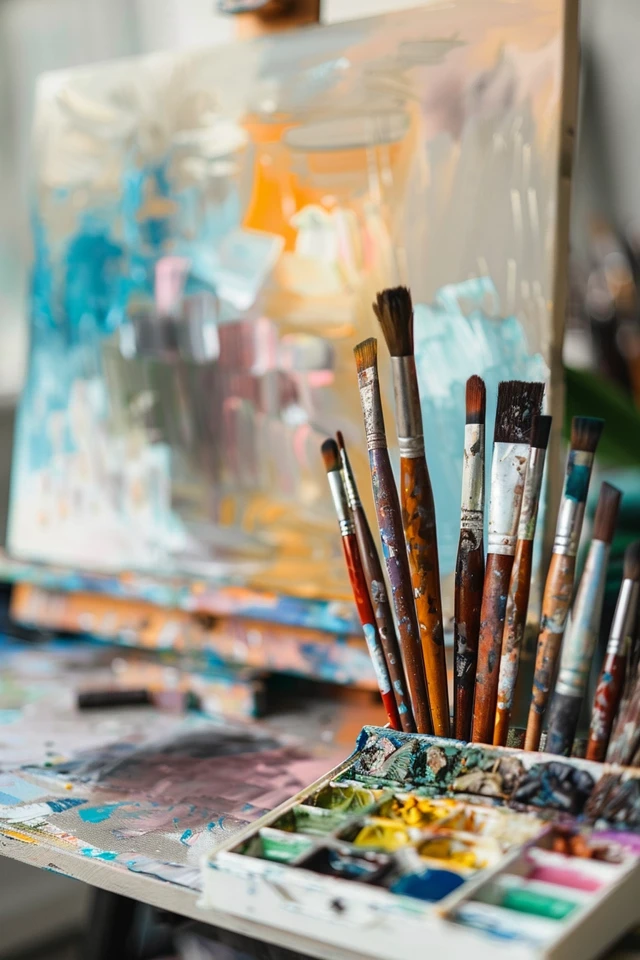When it comes to art preservation, one challenge that artists and collectors may encounter is how to clean an acrylic painting that has been affected by cigarette smoke. The presence of smoke residue can dull the colors and distort the original appearance of the artwork. However, with the right techniques and care, it is possible to restore the painting to its former glory.
Before attempting to clean the painting, it is crucial to ensure that the paint is completely dry. This will prevent any smudging or dulling of the colors during the cleaning process. Once the paint is dry, you can start by gently removing any loose dirt or debris from the surface of the painting using a soft-bristled brush. Be careful not to apply too much pressure as it may damage the paint.
In addition to cleaning the painting, regular maintenance is key to preserving its condition. Dusting the painting regularly with a dry, soft brush can help prevent the accumulation of dirt or dust, which can be absorbed into the paint over time. Furthermore, it’s important to pay attention to the frame as well. Dust the frame using a damp cloth or appropriate cleaning method based on the material.

Key Takeaways:
- Ensure the acrylic paint has fully dried before attempting to clean it to prevent smudging or dulling of colors.
- Gently use a soft-bristled brush to remove loose dirt or debris from the painting’s surface.
- Dust the painting regularly to prevent dirt from being absorbed into the paint.
- Maintain the frame of the painting by dusting it with a damp cloth or appropriate cleaning method according to the material.
- Prioritize preserving the original appearance of the artwork and avoid using harsh chemicals or abrasive tools that can damage the paint.
Maintenance and Preservation Tips for Acrylic Paintings
Regular maintenance and preservation are essential for keeping acrylic paintings in good condition. By following these simple tips, you can ensure the longevity and beauty of your artwork.
1. Dusting and Cleaning
Dusting the paintings regularly with a dry, soft brush is one of the easiest and most effective ways to remove accumulated dirt and dust. Remember to be gentle while brushing to avoid causing any damage to the paint. Start from the top of the painting and work your way down, using light strokes. This will prevent any dust from falling onto previously cleaned areas.
If your acrylic painting requires a deeper clean, you can use a slightly dampened microfiber cloth to gently wipe the surface. Be careful not to use too much water as it can cause the paint to smudge or run. Always test the cloth on a small inconspicuous area of the painting before proceeding.
Note: When cleaning your acrylic artwork, avoid using any harsh chemicals or abrasive cleaning agents as they can damage the paint.
2. Frame Care
Frames play an important role in protecting and enhancing the appearance of your acrylic paintings. Regular cleaning of frames is necessary to prevent dirt and dust buildup. Use a damp cloth or an appropriate cleaning method based on the material of the frame. Avoid using excessive water on wooden frames as it can cause warping or damage the finish.

3. Protection from Smoke Damage
To preserve your acrylic paintings from smoke damage, it’s crucial to keep them in a smoke-free environment. Smoke residue can adhere to the painting’s surface over time, leaving unsightly stains and discoloration. If your artwork has been exposed to smoke, seek professional art conservation techniques to safely remove the residue without causing harm to the paint.
By following these maintenance and preservation tips, you can ensure your acrylic paintings remain vibrant and beautiful for years to come.
Lorem ipsum dolor sit amet, consectetur adipiscing elit. Duis in nibh et nisl tempor tempor. Quisque vestibulum lacus vitae ligula efficitur auctor. Sed convallis porttitor aliquet. Curabitur sit amet sollicitudin dolor, ac consectetur elit. Curabitur gravida magna sed purus dapibus fringilla. Integer hendrerit dictum ante nec dapibus. Sed in malesuada eros, fermentum lacinia odio. Etiam lobortis est mi, sit amet rhoncus erat varius eu. Duis luctus dolor quis urna lobortis sollicitudin in eget risus. Fusce justo magna, rutrum eu convallis et, placerat vitae enim. Vivamus quis lobortis neque, sed fermentum metus. Vivamus condimentum nulla in justo viverra euismod. Nunc tristique ultrices est, a efficitur justo sagittis vitae.

Conclusion
Cleaning an acrylic painting that has been affected by cigarette smoke requires careful attention and the use of proper techniques. It is crucial to prioritize the preservation of the artwork’s original appearance while also ensuring the removal of smoke residue. Harsh chemicals or abrasive tools should be avoided to prevent damage to the delicate paint layers.
Various art restoration methods can be employed to effectively remove smoke residue from paintings. One commonly used technique is surface cleaning, which involves the gentle removal of dirt and smoke particles using soft brushes and non-abrasive materials. This method helps to restore the painting’s visual clarity and original colors without causing any harm.
Additionally, the use of mild cleaning solutions specifically formulated for art restoration can aid in the removal of stubborn smoke stains. It is essential to follow the instructions provided by the manufacturer and test the solution on a small, inconspicuous area of the painting before applying it to the entire surface.
By employing these art restoration methods and being cautious in our cleaning approach, we can successfully remove smoke residue from acrylic paintings while preserving their integrity and ensuring their longevity for years to come.

